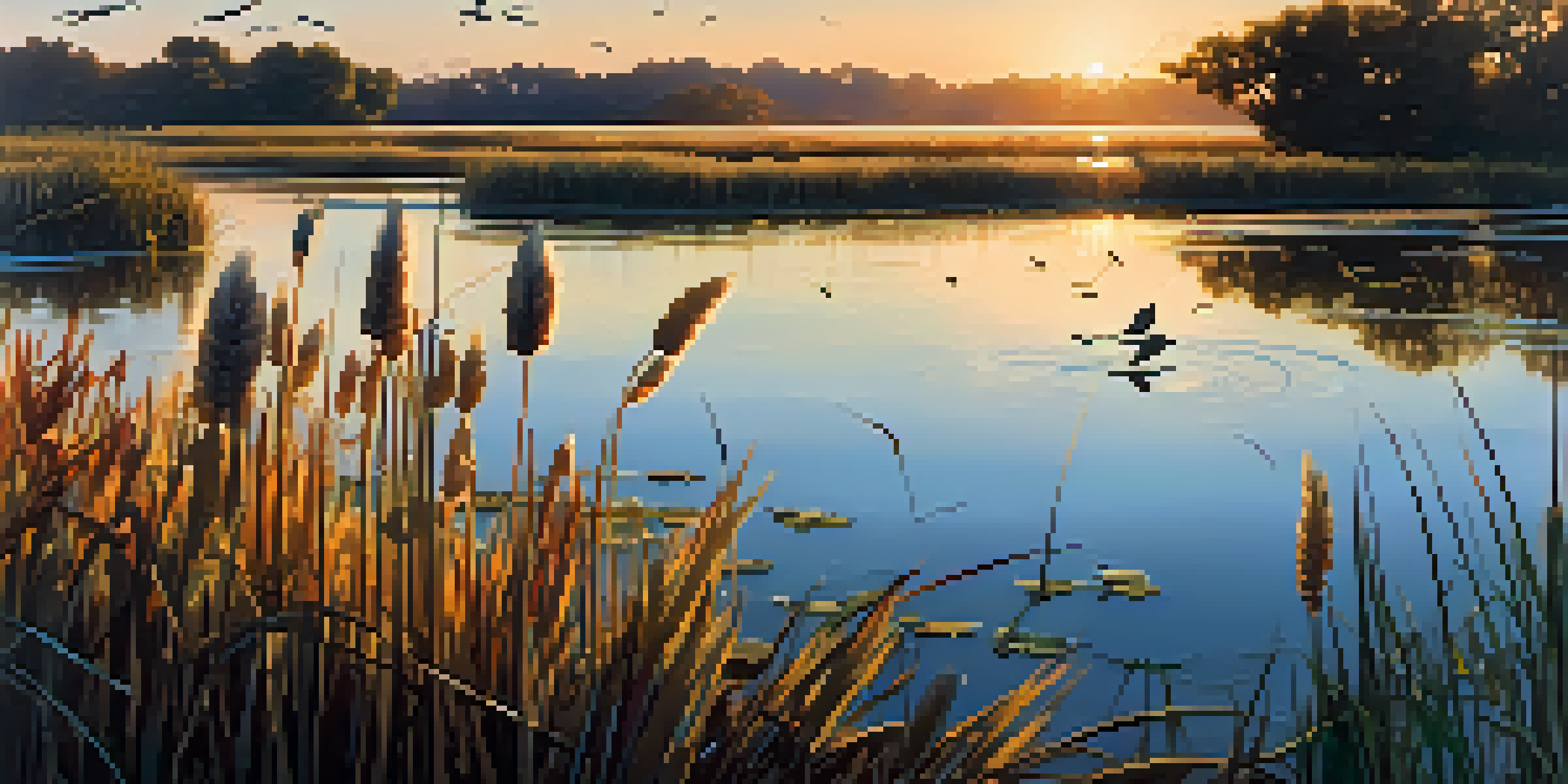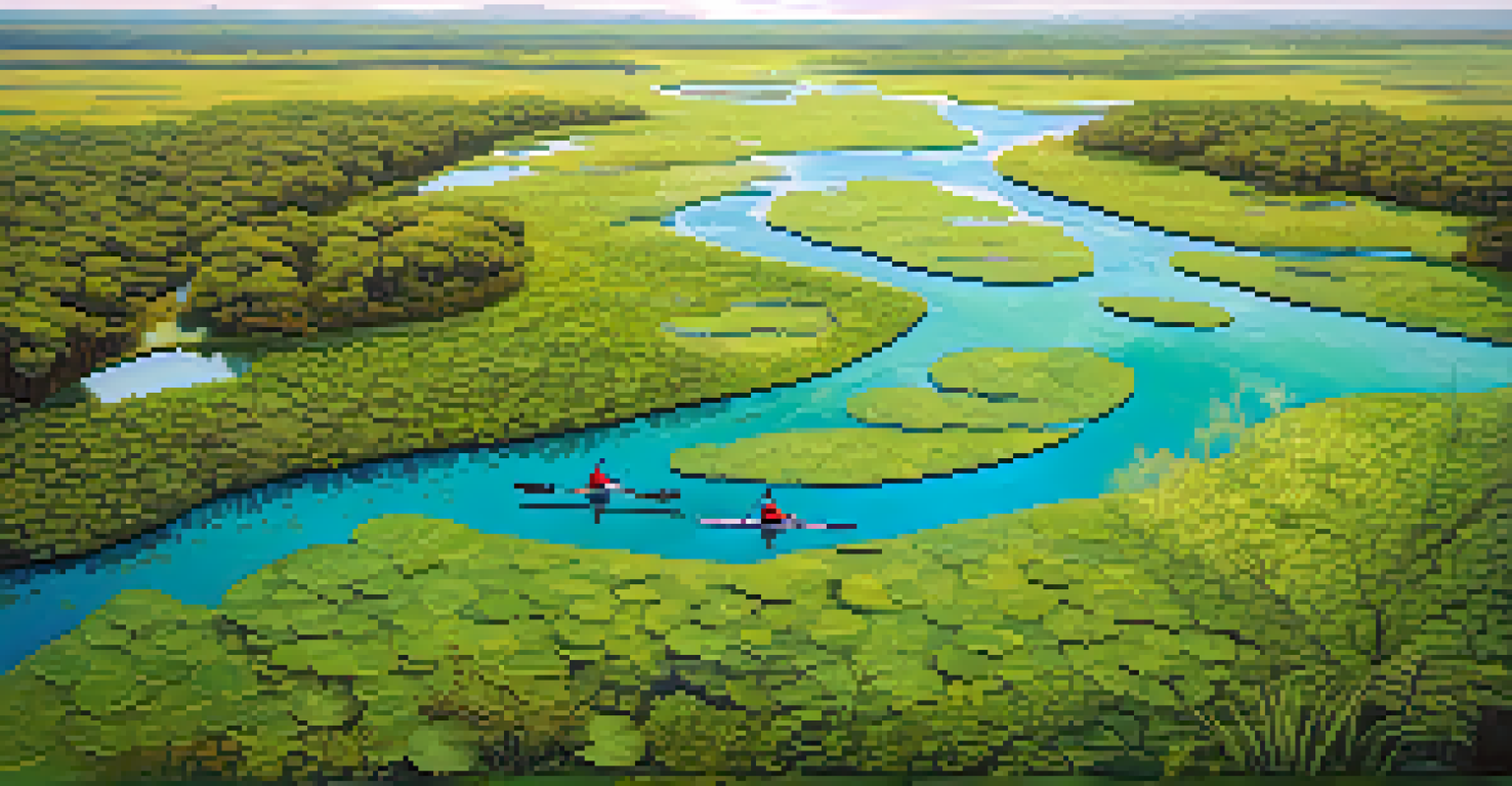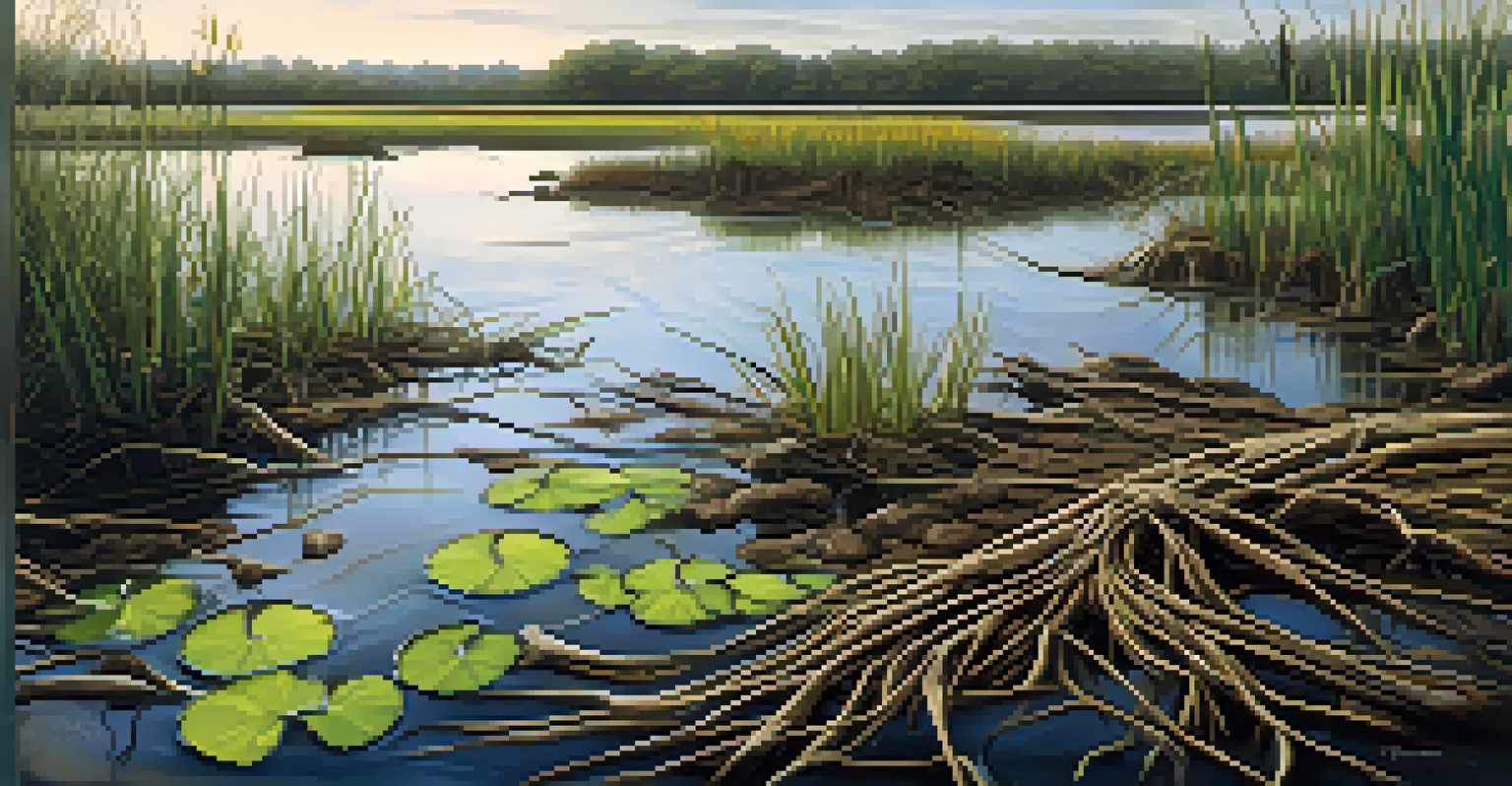The Contribution of Wetlands to Biodiversity and Ecosystems

Understanding Wetlands: Nature's Richest Ecosystems
Wetlands are unique ecosystems that include swamps, marshes, and bogs. These areas are characterized by saturated soil conditions, which support a diverse range of plants and animals. Think of wetlands as nature's sponges, absorbing excess water and providing a habitat for countless species.
Wetlands are among the most productive ecosystems on Earth, providing invaluable services for both nature and humanity.
In fact, wetlands cover about 6% of the Earth's surface yet host more than 40% of the world’s plant and animal species. This makes them incredibly important for biodiversity. For instance, the intricate root systems of wetland plants not only stabilize the soil but also provide shelter for fish and other wildlife.
Moreover, wetlands act as nurseries for many aquatic species, offering a safe haven for young fish to grow before venturing into larger bodies of water. The rich biodiversity found in these areas contributes significantly to the overall health of the planet.
The Role of Wetlands in Carbon Sequestration
Wetlands play a crucial role in mitigating climate change by acting as carbon sinks. They absorb carbon dioxide from the atmosphere and store it in plant biomass and soil. This process is vital in reducing greenhouse gases and combating global warming.

For example, peatlands, a type of wetland, can store up to 30% of the world’s soil carbon despite covering only 3% of the land surface. When these areas are drained or destroyed, the stored carbon is released, contributing to climate change. Therefore, protecting wetlands is essential for maintaining our climate balance.
Wetlands as Carbon Sinks
Wetlands act as vital carbon sinks, storing significant amounts of carbon and helping mitigate climate change.
Additionally, the ability of wetlands to sequester carbon highlights the interconnectedness of ecosystems. When we preserve wetlands, we not only protect wildlife but also help in climate regulation, showcasing the importance of biodiversity in addressing environmental challenges.
Wetlands as Natural Water Filters
One of the remarkable functions of wetlands is their ability to filter pollutants from water. The plants and microorganisms found in these ecosystems trap sediments and break down harmful substances, improving water quality. This natural filtration system is invaluable for maintaining clean water supplies.
The protection of wetlands is a vital part of our climate strategy, as these ecosystems play a key role in carbon sequestration and biodiversity.
For instance, wetlands can effectively remove nutrients like nitrogen and phosphorus from agricultural runoff, which, if left unchecked, can lead to harmful algal blooms. By absorbing these excess nutrients, wetlands help protect downstream water bodies from pollution.
This filtering process not only benefits aquatic ecosystems but also provides clean water for human use. Communities that rely on wetlands for their water supply can enjoy healthier ecosystems and improved public health outcomes.
Supporting Wildlife: Habitats and Breeding Grounds
Wetlands are essential habitats for a diverse array of wildlife, providing food, shelter, and breeding grounds. Birds, amphibians, fish, and mammals all depend on these unique ecosystems for their survival. For example, migratory birds often rely on wetlands for resting and refueling during their long journeys.
The diverse plant life in wetlands offers a rich diet for many species, while the complex structure of the ecosystem provides safe nesting sites. These areas are particularly important during breeding seasons when animals seek secure environments to raise their young.
Wetlands Boost Biodiversity
Wetlands cover only 6% of Earth's surface yet support over 40% of the world's plant and animal species, highlighting their crucial role in biodiversity.
By supporting such a wide range of species, wetlands contribute to overall ecosystem resilience. A rich biodiversity means that ecosystems are better equipped to withstand environmental changes and stresses.
The Economic Value of Wetlands
Beyond their ecological importance, wetlands offer significant economic benefits. They support industries like fishing, tourism, and agriculture, providing livelihoods for millions of people worldwide. Healthy wetlands can enhance local economies by attracting tourists eager to experience their beauty and biodiversity.
For example, ecotourism in wetland areas can generate substantial revenue while promoting conservation efforts. Activities like birdwatching, kayaking, and nature photography thrive in these rich ecosystems, drawing visitors from far and wide.
Moreover, wetlands contribute to flood control and water management, reducing the economic impact of natural disasters. By absorbing excess rainwater, they lessen the burden on urban areas, potentially saving communities from costly damages.
Threats Facing Wetlands Worldwide
Despite their importance, wetlands are increasingly threatened by human activities. Urbanization, agriculture, and pollution are among the leading causes of wetland degradation. With nearly 87% of the world’s wetlands lost since the 1700s, the urgency of protecting these ecosystems is more critical than ever.
For instance, draining wetlands for agricultural expansion not only destroys habitats but also disrupts the natural water cycle, leading to increased flooding and drought. Climate change further exacerbates these challenges, affecting the delicate balance of wetland ecosystems.
Natural Water Filtration
Wetlands filter pollutants and improve water quality, making them essential for both ecosystems and human communities.
To combat these threats, it’s essential to raise awareness and implement conservation strategies. Supporting policies that protect wetlands can help ensure these vital ecosystems continue to thrive for future generations.
Conservation Efforts and Restoration Initiatives
Recognizing the importance of wetlands, various conservation efforts have been initiated globally. Organizations and governments are working together to restore degraded wetlands and protect existing ones. These initiatives often involve community engagement and education to foster a sense of stewardship.
For instance, rewetting drained peatlands has become a crucial part of climate action plans in many countries. By restoring these areas, we can enhance their ability to sequester carbon while also providing habitats for wildlife.

Additionally, promoting sustainable practices in agriculture and urban planning can help reduce the pressure on wetland ecosystems. By prioritizing conservation, we can create a healthier planet and ensure the survival of these invaluable ecosystems.